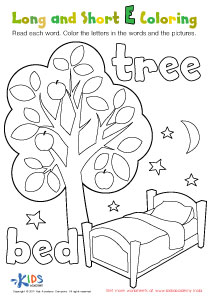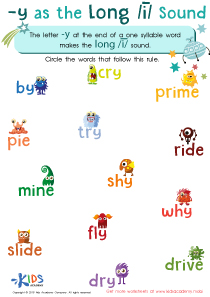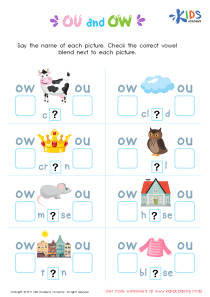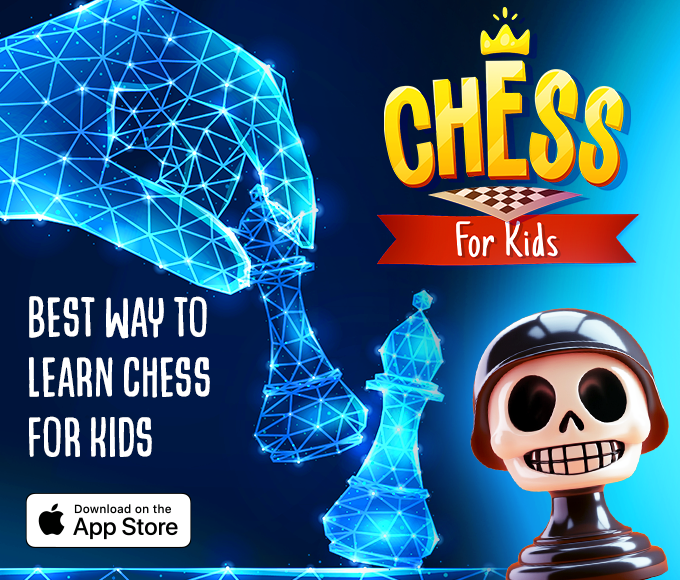Vocabulary enhancement Normal Vowel Diphthongs Worksheets for Ages 4-8
4 filtered results
-
From - To
Enhance your child's vocabulary with our engaging Normal Vowel Diphthongs Worksheets tailored for ages 4-8. These worksheets are designed to help young learners grasp the complexities of vowel combinations effortlessly. Through fun and interactive activities, children will practice recognizing and pronouncing diphthongs, boosting their reading and spelling skills. Perfect for early grade students, our expertly crafted resources promote a love for learning while solidifying foundational literacy skills. Give your child the tools they need to excel in language development with Kids Academy's diverse and stimulating educational worksheets. Ideal for parents and educators seeking reliable teaching aids.
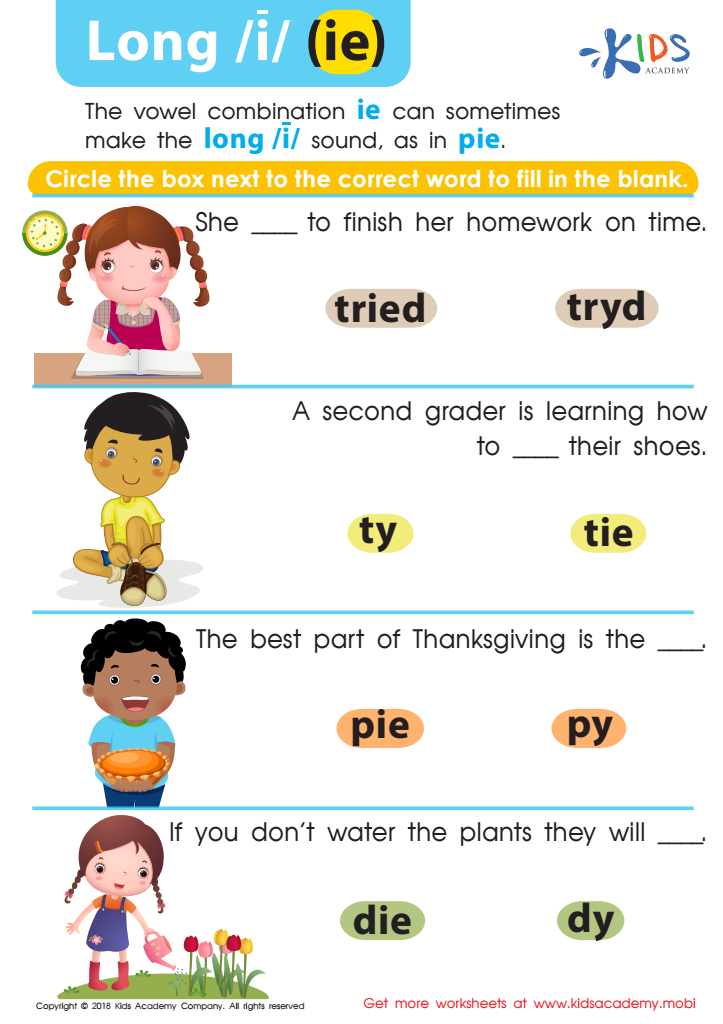

Reading: Long I and IE Worksheet
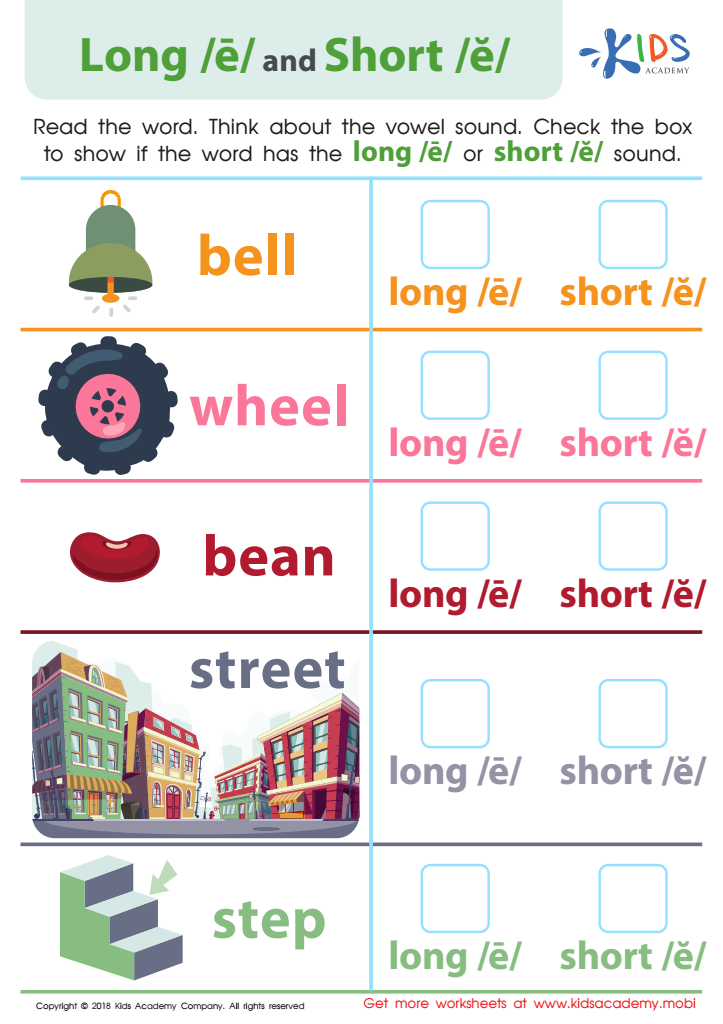

Reading: Long E and Short E Worksheet
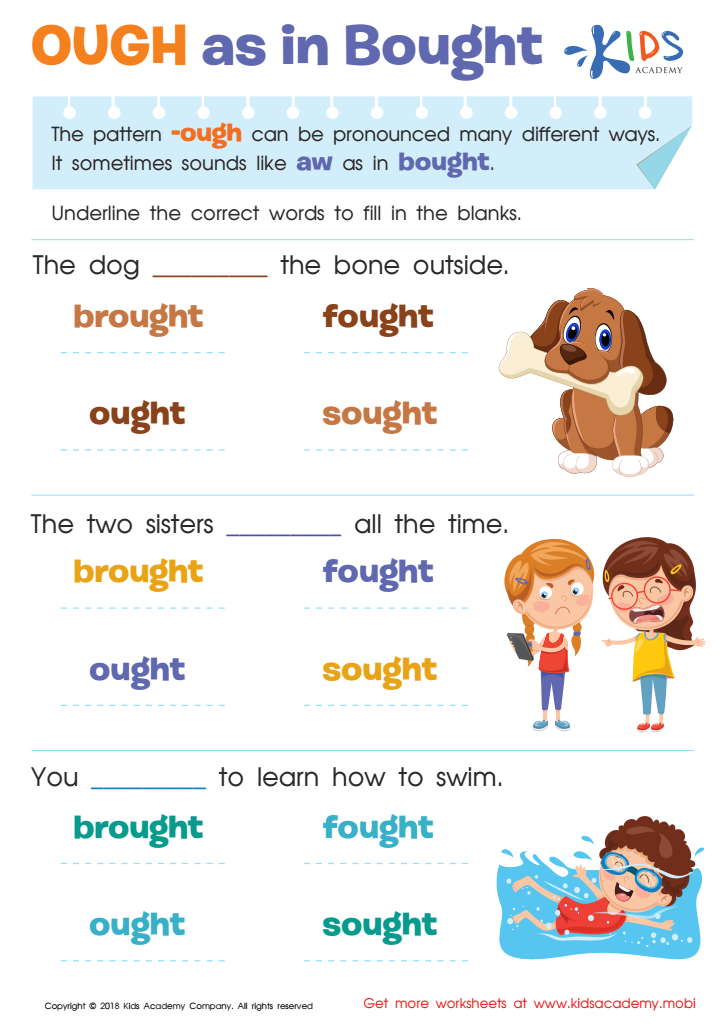

OUGH as in Bought Worksheet
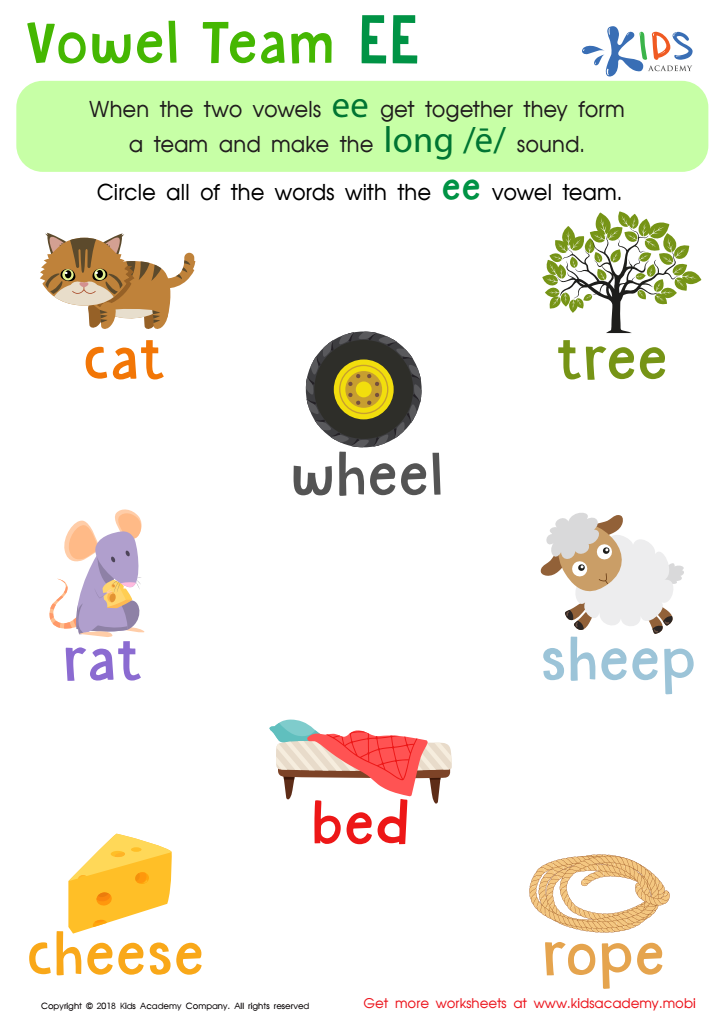

Reading: Vowel Team EE Worksheet
Vocabulary enhancement and understanding normal vowel diphthongs are critical components of early childhood literacy, specifically for children ages 4-8. Vocabulary enrichment helps young children communicate effectively, comprehend reading material, and engage in more meaningful conversations. A robust vocabulary sets the foundation for reading fluency, academic success, and cognitive development.
Normal vowel diphthongs, or "vowel teams," involve two vowel sounds working together to create a single gliding sound, such as /oy/ in "boy" or /ou/ in "house." Grasping these diphthongs helps children decode words more accurately and read with greater confidence. Understanding these complex vowel combinations aids in pronunciation, spelling, and decoding unfamiliar words, which are essential skills for independent reading.
Furthermore, early mastery of vowel diphthongs and a rich vocabulary contribute substantially to a child’s phonemic awareness, an essential element in reaching literacy milestones. Engaging learning activities around these elements can make literacy fun and effective. When parents and teachers prioritize vocabulary enhancement and the understanding of normal vowel diphthongs, they help build a strong literacy foundation that supports educational and personal growth in young children.
In essence, giving attention to these areas ensures that children not only learn to read but enjoy reading, laying the groundwork for lifelong learning and curiosity.
 Assign to My Students
Assign to My Students




